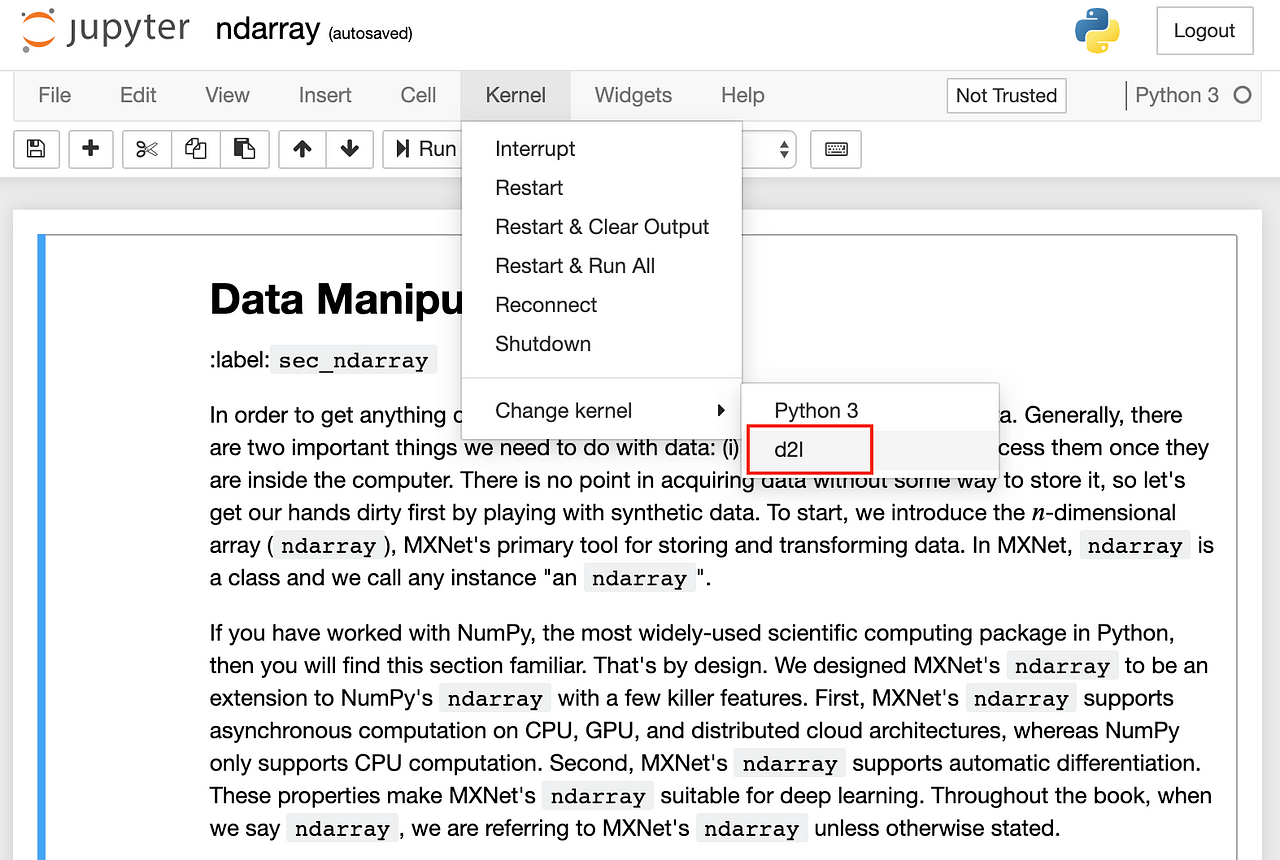
- INSTALL JUPYTER NOTEBOOK IN CONDA ENVIRONMENT HOW TO
- INSTALL JUPYTER NOTEBOOK IN CONDA ENVIRONMENT INSTALL
- INSTALL JUPYTER NOTEBOOK IN CONDA ENVIRONMENT UPDATE
Here is an example of an environment I created for my Ph.D.: Nb_conda_kernels package in each of your environments, which will allow you to switch from one environment to another, directly from your notebooks.
INSTALL JUPYTER NOTEBOOK IN CONDA ENVIRONMENT INSTALL
Then install all the packages you need, especially jupyter (+ jupyterlab if you prefer from basic notebooks, which is my case). So here is how I work on my side, I create an environment with the name of my project and a version (for example project_v0): conda create -n project_v0 The problem is that when you are not familiar with the environment you don’t necessarily make a backup and it is sometimes difficult to get back to something functional! By experience, it happened to me several times to break this environment without being able to go back and to have to finally reinstall everything. I do not recommend that you use your base environment. If you want to know more, click on the link in the title. conda config -add channels conda-forgeĬonda config -set channel_priority strict This step is completely optional, but it allows to facilitate the installation of future packages that would not be the basic channel of conda.
INSTALL JUPYTER NOTEBOOK IN CONDA ENVIRONMENT UPDATE
Then you can start over or forget about Miniconda forever :pĬonda-forge and update your installation (optional but I recommend)

That way I get to know that my work is valuable to you and also notify you for future articles.If you are not happy, fucked up any step or you are scared… that happens… Just remove the folder miniconda3 ( rm -r /data/login/miniconda3 or the path you put at the installation step) and then remove the lines that were added in your bashrc. Thanks for reading, if you liked this article, please consider subscribing to my blog.

Hope you got a basic understanding of how create, add and remove a conda environment as Jupyter Kernel. This brings us to the end of this article.


Secondly install the ipykernel: conda install -c anaconda ipykernelįinally, for the env ex create the kernel you can define also the Kernel name: python -m ipykernel install -user -name ex -display-name "Python (ex)" This can be done easily by following the below steps:įirst activate the env as follow: conda activate ex If you finished the project and you now want to delete the conda environment (in that case env named 'ex') simply run the following: conda env remove -n ex You can validate that the new environment was created by printing all conda envs conda env list. This will create a new conda env using the current Python version if you want a specific Python version that is not your current version, then: conda create -n ex python=3.6 To create a new conda environment named 'ex' simply run the following command named: conda create -n ex #where 'ex' is the name of your new conda environment Simply open your terminal and type the following command: conda env list In this article, I will try to summarize the steps taken to tackle this issue.
INSTALL JUPYTER NOTEBOOK IN CONDA ENVIRONMENT HOW TO
One thing that I used to google a lot every time I start a new project is how to create a new conda environment and add it as Jupyter Kernel. As data scientist, I daily work with Jupyter Notebook/ Jupyter Lab.


 0 kommentar(er)
0 kommentar(er)
